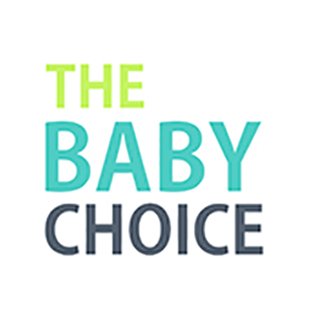Phonics and whole language are two approaches to teaching reading that have been debated in the field of education for decades. Phonics instruction emphasizes the relationship between letters and their corresponding sounds, while whole language instruction focuses on the meaning and context of words.
While both approaches have their strengths and weaknesses, the debate continues as to which approach is more effective in teaching children to read. Proponents of phonics argue that it provides a systematic and structured approach to reading instruction, allowing children to decode words more easily and accurately. Meanwhile, supporters of whole language argue that it promotes an appreciation for literature and encourages children to engage with texts on a deeper level.
This article will explore both approaches in detail, examine the research on their effectiveness, and provide considerations for choosing an approach that best suits the needs of individual students.
Key Takeaways
- Phonics instruction provides a systematic and structured approach that improves decoding skills, fluency, and comprehension, making it effective for students with learning disabilities or who struggle with reading.
- Whole language instruction promotes appreciation for literature and critical thinking, encouraging students to engage with texts on a deeper level, making it effective for certain students, particularly strong readers.
- Phonics-based instruction is more effective than whole language instruction for developing early reading skills, and comparative studies consistently show higher student achievement in reading with phonics-based instruction.
- A balanced literacy approach, which involves using a variety of teaching strategies, including phonics instruction, shared reading, and guided reading, provides a balanced approach to teaching reading and addresses the needs of all learners.
Overview of Phonics and Whole Language Approaches
An overview of the phonics and whole language approaches reveals distinct differences in the methods used for teaching reading and writing skills.
Phonics is a bottom-up approach that emphasizes the importance of teaching students the relationship between letters and sounds. This approach is rooted in the theoretical foundation of behaviorism, which posits that learning is a result of conditioned responses to stimuli.
Phonics instruction typically begins with teaching students the sounds associated with individual letters, progressing to blends and digraphs, and ultimately to decoding words. This approach has its historical roots in the 19th century and gained popularity in the United States in the 1930s.
In contrast, whole language is a top-down approach that emphasizes the importance of meaning and context in learning to read and write. This approach is rooted in the theoretical foundation of constructivism, which posits that learning is a result of actively constructing meaning from experiences.
Whole language instruction typically begins with exposing students to authentic, meaningful texts, encouraging them to use context clues to decipher unfamiliar words. This approach gained popularity in the 1970s and 1980s as a response to the perceived limitations of phonics instruction. However, it has since fallen out of favor due to concerns about its effectiveness and the lack of empirical evidence supporting its use.
The Phonics Approach
The method of teaching reading that emphasizes the relationship between sounds and letters is a highly structured and systematic approach called phonics instruction.
Phonics instruction focuses on teaching children to decode words by identifying the sounds that each letter or combination of letters makes.
In essence, phonics instruction teaches children to read by sounding out words.
Phonics instruction has been found to be effective in helping children develop strong decoding skills, which are essential for reading fluency and comprehension.
Research has shown that explicit and systematic phonics instruction can significantly improve children’s reading skills, especially for those struggling with reading difficulties.
Moreover, phonics instruction has been found to be beneficial for both native and non-native English speakers, as it helps them to learn the rules of the English language and decode unfamiliar words.
The Whole Language Approach
A reading instruction method that emphasizes the integration of language skills and the use of context clues and visual aids to understand the meaning of words and texts is known as the whole language approach. This approach focuses on teaching reading in a holistic manner that considers the child’s prior knowledge, experiences, and socio-cultural background. Rather than teaching phonics as the main strategy, whole language instruction encourages children to learn to read by immersing them in rich language experiences that allow them to make meaning of the words they encounter.
In the early childhood years, the whole language approach can be effective in promoting reading development as it encourages children to think critically and make connections between what they read and what they already know. This approach recognizes that reading is not just about decoding words, but about making sense of what is read. However, critics argue that the whole language approach may not be sufficient in teaching children the phonetic rules and decoding skills necessary for reading fluency. As with any approach, the whole language approach can be effective when used in conjunction with other instruction methods that promote phonics, vocabulary, and comprehension skills.
| Pros | Cons | ||
|---|---|---|---|
| Encourages critical thinking | May not teach phonetic rules adequately | ||
| Promotes integration of language skills | May not promote reading fluency | ||
| Considers socio-cultural background | May not be suitable for all learners | ||
| Focuses on understanding meaning | May not teach decoding skills | ||
| Immerses children in rich language experiences | May not provide enough structure | which can lead to confusion for some learners who need more explicit instruction. |
The Debate Between Phonics and Whole Language
The debate surrounding the best approach for teaching reading has been a topic of interest in the field of education for many years.
On one side of the debate, proponents of phonics argue that learning to read requires explicit instruction in the relationship between letters and sounds.
They believe that phonics instruction is essential for children to develop the decoding skills necessary for reading comprehension.
On the other side, advocates of the whole language approach argue that children learn to read through exposure to authentic, meaningful texts.
They believe that children learn to read best when they are engaged in reading activities that are interesting and relevant to their lives.
There are pros and cons to both approaches.
Phonics instruction has been shown to be effective in improving decoding skills, but some argue that it can be boring and tedious for children.
The whole language approach can help children develop a love of reading and an appreciation for literature, but critics argue that it does not provide enough explicit instruction in decoding skills.
Implementation challenges also exist for both approaches.
Phonics instruction can be difficult to implement in a way that is engaging and meaningful for children, while the whole language approach requires a wide range of high-quality, authentic texts that can be challenging to obtain.
Ultimately, the best approach to teaching reading is likely to be a combination of both phonics and whole language instruction, tailored to the needs of individual students.
Research on Phonics and Whole Language
The effectiveness of phonics and whole language approaches has been the subject of numerous research studies.
These studies have compared the results of using each approach and have attempted to determine which method is more effective.
The research on phonics and whole language is important for educators to consider when deciding which approach to use in teaching reading and writing.
Effectiveness of Each Approach
Comparative studies have shown that phonics-based instruction is more effective than the whole language approach in developing early reading skills. Phonics-based instruction teaches students to decode words by breaking them down into individual sounds and blending them together, while the whole language approach focuses on teaching comprehension through exposure to whole words and literature. While the whole language approach may be more enjoyable for students, research has shown that it does not provide the necessary tools for students to become proficient readers in the long term.
When considering cultural considerations, it is important to note that phonics instruction has been shown to be effective for students from a variety of linguistic backgrounds. For example, in a study of bilingual Spanish-English students, those who received phonics instruction showed greater improvement in both their English and Spanish reading skills than those who received whole language instruction. Additionally, phonics instruction has been shown to be effective for students with learning disabilities or who struggle with reading, as it provides a systematic and structured approach to decoding words. Overall, while the whole language approach may have some benefits, research supports the effectiveness of phonics-based instruction in developing early reading skills.
| Phonics-based Instruction | Whole Language Approach |
|---|---|
| Teaches students to decode words by breaking them down into individual sounds and blending them together. | Focuses on teaching comprehension through exposure to whole words and literature. |
| Provides necessary tools for students to become proficient readers in the long term. | May be more enjoyable for students, but research has shown it does not provide necessary tools for long-term proficiency. |
| Effective for students from a variety of linguistic backgrounds and those with learning disabilities or who struggle with reading. | May not be as effective for students with diverse linguistic backgrounds or who struggle with reading. |
Comparison of Results
When examining the effectiveness comparison of phonics and whole language approaches, studies have shown that phonics instruction consistently leads to higher student achievement in reading.
One study conducted by the National Reading Panel found that phonics instruction resulted in significant improvements in decoding, word recognition, and spelling skills, while whole language instruction did not produce the same level of improvement.
Additionally, a meta-analysis of multiple studies found that phonics instruction had a positive impact on reading comprehension, especially for struggling readers.
In contrast, the whole language approach emphasizes a more holistic approach to reading instruction, focusing on the meaning and context of words rather than the individual sounds and letters.
While some studies have shown that whole language instruction can be effective for certain students, particularly those who are already strong readers, it has not been found to be as consistently effective as phonics instruction for the majority of students.
Overall, the evidence suggests that phonics instruction is a more effective approach to early reading instruction, particularly for students who are struggling with reading.
Considerations for Choosing an Approach
One critical factor to consider when selecting an approach for teaching reading is the specific needs and abilities of the students. Each student has a unique learning style, and the teaching philosophy of the instructor can also play a role in determining the best approach.
For example, some students may benefit more from a phonics-based approach, which emphasizes the sounds and rules of language, while others may thrive with a whole language approach, which focuses on the meaning and context of words. It is important to consider the individual needs and abilities of students before deciding on an approach, as well as to be open to adapting the approach as needed.
Another consideration when choosing an approach is the specific goals and objectives of the reading instruction. For example, if the goal is to improve reading fluency, a phonics-based approach may be more effective, as it can help students decode words quickly and accurately. On the other hand, if the goal is to improve comprehension and critical thinking skills, a whole language approach may be more beneficial, as it encourages students to engage with the text and make connections between words and ideas.
Ultimately, the approach chosen should be based on a careful consideration of the needs and goals of the students, as well as the strengths and weaknesses of the different approaches.
Combining Phonics and Whole Language
Integrating the principles of both phonics and whole language can provide a more comprehensive approach to teaching reading. This approach recognizes that different teaching strategies may work better for different learning styles. Phonics instruction emphasizes the relationship between letters and sounds, while whole language instruction focuses on meaning and context. By combining these two approaches, teachers can provide a more balanced approach that addresses the needs of all learners.
One way to integrate phonics and whole language is through a balanced literacy approach. This approach involves using a variety of teaching strategies, including phonics instruction, shared reading, and guided reading. During phonics instruction, teachers focus on teaching students the relationship between letters and sounds. Shared reading involves reading aloud to students and discussing the text, while guided reading involves working with small groups of students to help them develop their reading skills. By using a balanced literacy approach, teachers can provide a more comprehensive approach to teaching reading that addresses the needs of all learners.
| Phonics Instruction | Whole Language Instruction | Balanced Literacy Approach |
|---|---|---|
| Emphasizes relationship between letters and sounds | Focuses on meaning and context | Uses a variety of teaching strategies |
| Teaches decoding skills | Encourages reading for meaning | Includes phonics instruction, shared reading, and guided reading |
| Focuses on word recognition | Emphasizes comprehension | Addresses the needs of all learners |
| Works well for some learners | Works well for some learners | Provides a balanced approach to teaching reading |
Incorporating both phonics and whole language approaches can benefit students with different learning styles. While phonics instruction may work well for some students who need to develop decoding skills, whole language instruction may work better for students who need to focus on comprehension and meaning. By using a balanced literacy approach, teachers can provide a more comprehensive approach to teaching reading that addresses the needs of all learners.
Frequently Asked Questions
What is the history of phonics and whole language approaches in education?
The history of the phonics and whole language approaches in education can be traced back to the early 20th century. Phonics, which emphasizes the relationship between sounds and letters, was the dominant approach until the 1930s, when the whole language approach emerged.
Whole language emphasizes the importance of meaning and context in learning to read, rather than breaking down words into individual sounds. The debate between these two approaches has been ongoing for decades, with proponents on both sides arguing for the superiority of their approach.
Despite this debate, research suggests that a balanced approach that incorporates both phonics and whole language is the most effective in teaching children to read.
How do phonics and whole language approaches differ in terms of their impact on students with learning disabilities?
Exploring the benefits and drawbacks of phonics and whole language approaches for struggling readers reveals that while both methods have their advantages and disadvantages, phonics instruction tends to be more effective for students with learning disabilities.
Phonics instruction focuses on the sounds and letter combinations that make up words, providing struggling readers with the foundational skills needed to decode and comprehend text.
In contrast, the whole language approach emphasizes meaning and context, relying on students to infer the meanings of words based on their prior knowledge and experiences. While this approach may work well for some students, struggling readers may struggle to make these connections and fall further behind.
However, it is important to note that a balanced approach that incorporates both phonics and whole language instruction may be the most effective for all learners, including those with learning disabilities.
Can phonics and whole language approaches be used in conjunction with each other in the same classroom?
Incorporating both phonics and whole language approaches in the same classroom can have benefits and challenges. One benefit is that students with different learning styles can be accommodated. Phonics can help students with sound-letter relationships and decoding, while whole language can help students with context and meaning.
However, implementing both approaches requires careful planning and coordination. Teachers need to decide how much time to allocate to each approach, how to balance the two, and how to integrate the two. Techniques such as using phonics to teach decoding and whole language to teach comprehension, providing explicit instruction and practice, and using authentic texts can be effective.
Nevertheless, challenges such as conflicting philosophies, limited time, and lack of training and resources can hinder the successful implementation of both phonics and whole language approaches.
How do phonics and whole language approaches impact literacy rates in different cultures and languages?
Cultural implications and language barriers can significantly impact the effectiveness of phonics and whole language approaches in improving literacy rates.
Different languages have unique phonetic and orthographic systems, which may require specific instructional methods to facilitate learning.
In addition, cultural factors such as a student’s background and experiences can influence their motivation and engagement in the learning process.
Language barriers may also pose challenges for students learning to read in a second language, further complicating the instructional approach.
Therefore, educators must consider these cultural and linguistic factors when selecting and implementing instructional strategies to best support their students’ literacy development.
What are some common misconceptions about phonics and whole language approaches?
Common misconceptions about phonics and whole language approaches are that they are outdated or too rigid. However, these misconceptions are not entirely accurate.
Phonics is a valuable tool for teaching children to read and write by breaking down words into their individual sounds and blending them together.
Whole language approaches, on the other hand, focus on building literacy skills through reading and writing in a meaningful context. While some critics argue that whole language approaches prioritize meaning over phonics, this is not necessarily true. Effective whole language instruction often includes phonics instruction as well.
It is important to recognize that both phonics and whole language approaches have their strengths and weaknesses, and a balanced approach that incorporates both can be the most effective way to teach literacy skills.
Conclusion
In conclusion, the debate between the phonics and whole language approaches continues.
While some studies suggest that phonics is the most effective approach, others argue that both approaches have their strengths and weaknesses.
When choosing an approach, educators should consider factors such as the needs of their students, their own teaching style, and the resources available to them.
It is also important to recognize that the effectiveness of an approach may vary based on individual students and their learning styles.
Ultimately, a combination of phonics and whole language may provide the most comprehensive approach to literacy instruction.
As the field of education continues to evolve, further research and experimentation will be necessary to determine the most effective methods for teaching literacy skills.

















